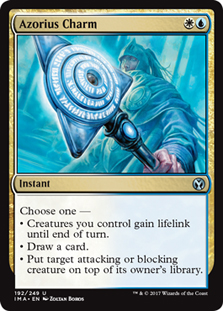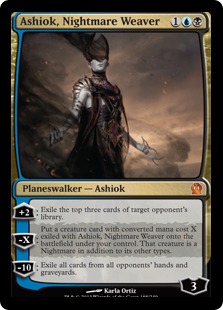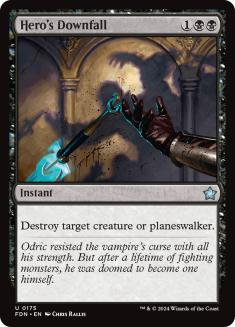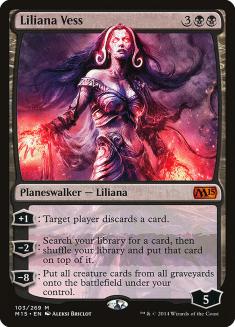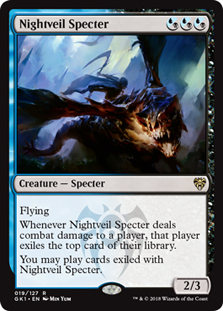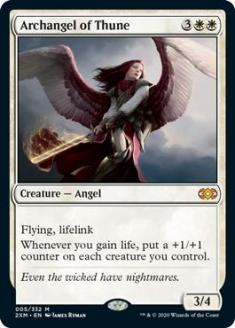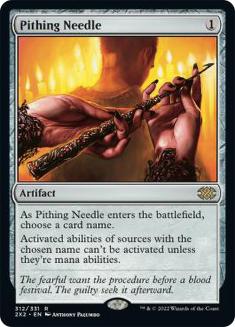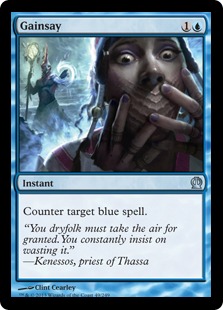“Let me tell you something you already know. The Pro Tour ain’t all sunshine and rainbows. It is a very mean and nasty place
and it will beat you til your cards have shuffle creases and keep them there permanently if you let it. You, me, or nobody is gonna make you tilt as
hard as Magic. But it ain’t how hard you punt; it’s about how hard you can punt, and keep moving forward. How much you can mulligan, and keep playing.
That’s how winning is done. Now, if you know what you’re worth, then go out and get what you’re worth. But you gotta be willing to take the punt, and
not pointing fingers saying you ain’t where you are because of a mulligan, or an opposing top deck, or a Pack Rat. Cowards do that and that ain’t you.
You’re better than that, you’re a Planeswalker!”
This past weekend marked my 49th Pro Tour which took place in Portland. If you were to ask me what Pro Tour I would have the best chance of winning, I
would have said this one. I played more Standard at competitive events leading up to this event than I have ever done before, including having a decent
amount of success at it on the SCG IQ and Open Series circuit. Before I get into the details of the Pro Tour, let me talk to you about my thought process
going in.
It seemed that Standard did not change much with the addition of M15 and since the Open Series is normally a great place to base a metagame off of, I felt
I had a good grasp of what others would be bringing to the table. The decks I was expecting to face, in no particular order, were Mono-Black Devotion,
Mono-Blue Devotion, Jund Monsters, Jund Walkers, U/W Control, Brave Naya, B/W Midrange, and some versions of R/W Burn. As it turned out, I had all my bases
covered and felt my maindeck and sideboard were ready to combat almost everything. Since my Open Series victory at Worcester, I made only a few small
changes to my list.
For reference, here’s the list I played at the PT:
Planeswalkers (8)
Lands (26)
Spells (26)

The one change I was unhappy with was adding Cyclonic Rift. I felt Jund Walkers had a chance to be the break out deck of the tournament as it is a very
powerful archetype and not a great match for Esper. The single Cyclonic Rift was a hedge over Fated Retribution as I thought that in other matchups that
were much quicker, I would be able to use Cyclonic Rift as an early bounce spell or to free my planeswalkers from opposing Detention Spheres. As it turned
out, Cyclonic Rift was very under powered and was the first card I boarded out in nearly every match.
No, let me rephrase that
As it turned out, Cyclonic Rift turned out to be a big steaming pile of something a Jackal Pup might leave on your front lawn.
The other two options I considered playing in that flex spot was either a main deck Pithing Needle or a Banishing Light. In hindsight, the Pithing Needle
would have been excellent and possibly could have made me reach my goal of a top 25 finish. Now, when I say my goal was top 25 finish, what I really mean
was my goal was to win the tournament. However, a top 25 finish would have given me Silver status and qualified me for the next two Pro Tours. I ended up
falling short, as an on board misplay in round 15 cost me a very important match. The misplay turned out to be one of the worst punts I’ve made in Magic in
a while.
The gist of the play was that I allowed my opponent a chance to top deck a four-damage burn spell as I somehow miscalculated damage and of course he did–a
nice Warleader’s Helix to the face. At the time I was devastated and very disappointed in myself. As soon as I was done with my last round, I left the site
and headed back to where I was staying. I didn’t talk, didn’t eat, just went to bed angry with how poorly I played. The next morning I thought about the
play over and over again and realized, yes, the play was terrible, and yes, Magic is hard and everyone will make misplays along the way. Most importantly
though, I realized for a player to improve they must realize their mistakes and use it as a learning experience.
One of main reasons I thought Esper was such a good choice (and I still think it is) is because you are able to have game against all of the decks. Your
discard, counter spells, and removal spells allow you a chance to control what your opponent is doing most of the time while your planeswalkers allow you
to put a great amount of pressure on them.
The deck performed reasonably well for me, but I only put up a 5-5 result in Standard and 4-2 in limited. My losses came at the hands of a Naya Walkers
deck, Jund Walkers, Mono-Black Devotion, B/W Midrange, and R/W Burn. At least two of those matches could have gone in my favor if I had made better in-game
decisions and tuned my deck slightly differently. Moving forward, some definite things that I would change are:
1.) The Cyclonic Rift is useless. You should be trading one for one with your opponent and break through with massive card advantage via a Sphinx’s
Revelation or a Jace, Architect of Thought. Cyclonic Rift does not follow your gameplan and doesn’t shut down any of your opponent’s threats. A card such
as Pithing Needle would be a great replacement for it. With the growth in popularity of Jund Walkers and how many copies of Mutavaults are in the format,
Pithing Needle provides a great solution to many of these problems.
2.) The removal of Ultimate Price in the sideboard. With the rise of G/W Aggro along with the slight increase of the B/W Midrange, Ultimate Price loses of
its value. Instead, replacing it with one copy of Hero’s Downfall gives you some versatility and additional removal to Obzedat and in the matchups where
you are bringing it in.
Now many of you might wonder why I chose to play Esper over U/W Control (to be fair, U/W did manage to win the Pro Tour which actually makes Esper a better
choice). First off, having access to Thoughtseize and the option for additional discard spells is a huge factor. But for me, Ashiok, Nightmare Weaver is
what really sets them apart. I’ve been a big proponent of Ashiok for quite some time. A three mana planeswalker that is useful in many matchups is
something that is very attractive to me, since it forces your opponent to really alter their game plan. Against the creature decks, Ashiok gives you a
chance to take other creatures early on and have a powerful threat which they need to answer. Against the control decks Ashiok works as a Millstone type
effect which is very dangerous, especially against U/W Control since they only run a handful of win conditions.
One of the best draws you can get with this deck is a turn 2 Thoughtseize into a turn 3 Ashiok backed up by counters, Azorius Charms, and removal spells.
Being able to turn the tables and apply threats in the form of planeswalkers really alters your opponents’ normal plan of attack. Usually players will be
expecting more counters/removal spells and a long drawn out game. However, Ashiok combined with your other planeswalkers and sideboard plan of Nightveil
Specter/Archangel of Thune really throws them for a loop. In addition to all this, the black also gives you additional answers to annoying cards such as
Obzedat, Ghost Council, Blood Baron of Vizkopa, and Mistcutter Hydra.
Another question that you might ask yourself is why there are no copies of Aetherling in this build and the overall lack of Aetherlings in the current
metagame. The main reason is that since Mono-Black Devotion and other decks will often have dead removal spells in their hand and playing an Aetherling
turns those removal spells back on. Because of this, Aetherling goes from a six-mana spell to an eight mana one since you want to have the mana to protect
it. Ashiok, Jace, Liliana, and Elspeth all serve as better win conditions and they also provide incremental card advantage along the way.
Going forward, public enemy #1 will definitely be the Jund Walkers deck as it is innovative, different, and put two players into the top 8 of the Pro Tour.
Let’s take a look at each list that made the top 8 of the Pro Tour:
Creatures (12)
Planeswalkers (11)
Lands (24)
Spells (13)

Creatures (11)
Planeswalkers (9)
Lands (23)
Spells (17)

The main plan of attack these decks will have against Esper is discard followed by hard to answer threats. Cards in my Esper decklist like Devour Flesh and
Supreme Verdict are somewhat needed but are not as powerful as they would have been against Jund Monsters. Because of this, I’ve decided to add two copies
of Hero’s Downfall to the sideboard and would plan to bring in both copies alongside a Negate, a Liliana Vess, two copies of Archangel of Thune, and three
copies of Nightveil Specters so you will be able to pressure their planeswalkers while also being reactive.
Game 1 will be extremely close which means there is almost no room for error. Timing your Thoughtseizes and counterspells properly will go a long way. With
them having access to up to four copies of Read the Bones, you will most likely have to ignore their card draw and removal spells and instead focus on
discard and countering their actual threats. The maindeck Pithing Needle should help with this plan and more likely than not Xenagos, the Reveler would be
the card named with Pithing Needle. Obviously this doesn’t hard lock them out as they have access to Vraska the Unseen and Abrupt Decay to solve that
problem, so your goal should be to disrupt them via discard, countermagic, and Detention Sphering their threats and resolving a large Sphinx’s Revelation
while they try to keep up. With trying to put this plan into motion, you may find yourself taking land heavy piles with Jace, Architect of Thought over a
single spell. This matchup is all about attrition and the more cards the better, especially when you know Rakdos’s Return is something in their range.
Supreme Verdict is something that can be shaved after sideboarding but then you have to worry about Mistcutter Hydra(s). Thankfully, that’s where your
creatures save the day. Nightveil Specter cannot block Mistcutter Hydra, but Archangel of Thune sure can, and if you can catch your Jund opponent off
guard, Specter and Archangel can outrace them while providing much needed card advantage for you to win your sideboarded games.
Here’s what a rough sideboard list would look like against Jund Walkers.
Out:
In:
Ignoring Jund Walkers, the other deck that will likely grow in popularity is Ivan Floch’s U/W Control deck. Fortunately, this matchup is very good for you
as long as you understand and practice the matchup. You are set up nicely as your Thoughtseizes will take you very far so long as you time them correctly.
This can open you up to resolving an early Ashiok or even clear the path for a large Sphinx’s Revelation later in the game. After sideboard, you’re looking
to bring in a handful of great spells for this matchup while removing many of your dead ones like Devour Flesh and Supreme Verdict.
Here’s what a rough sideboard sketch could look like:
Out:
In:
Overall, I look forward to seeing how Pro Tour Magic 2015 will affect the upcoming Open Series events and, of course, the Season Three Invitational in New
Jersey. For myself, I will be sticking with Esper until Sphinx’s Revelation rotates out of Standard, and I’m also considering jumping on the Shardless BUG
bandwagon in Legacy. If any of you have any thoughts on my Esper list or any sideboard tech for Shardless BUG, feel free to let me know!

